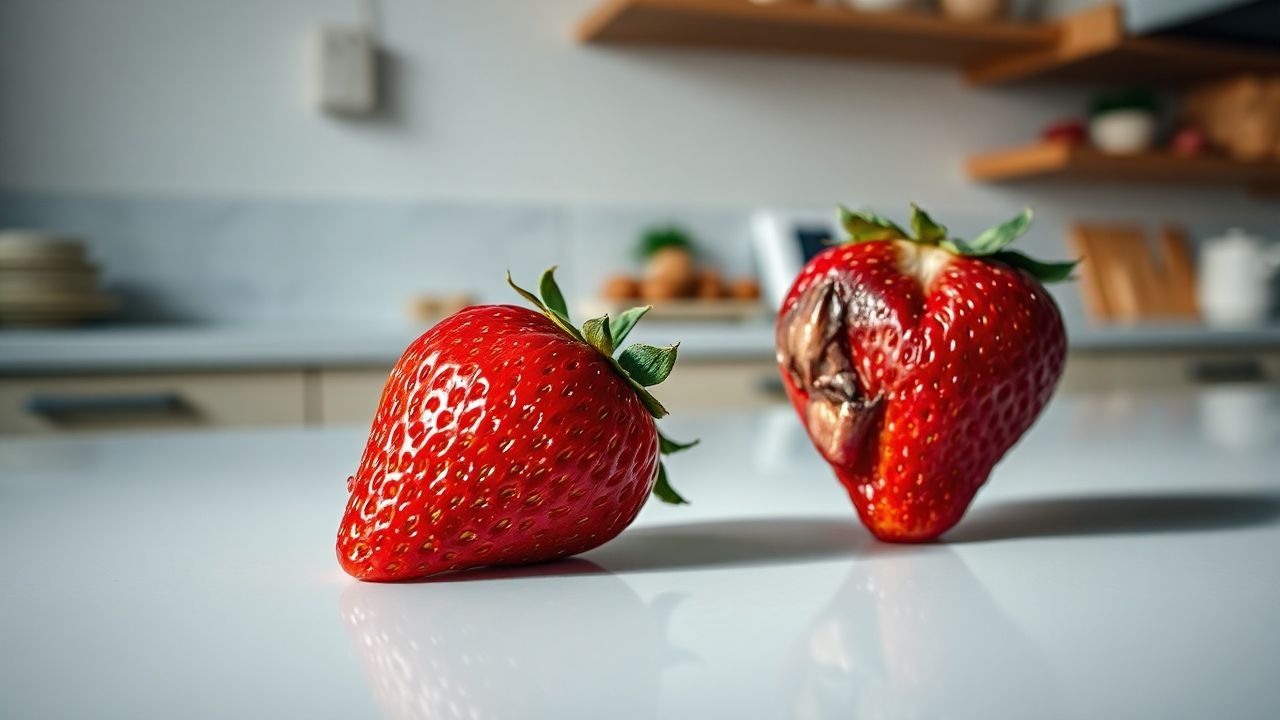Introduction to strawberry quality
Fruit size and shape are often the first indicators of strawberry quality. Perfectly ripe strawberries should be plump and evenly rounded, with no soft spots or bruises. The skin should be smooth and glossy, with a vibrant red color that extends throughout the fruit. Avoid strawberries with bumps or indentations, as these may indicate insect damage or improper storage. Additionally, check the calyx, the leafy cap at the top of the strawberry. It should be fresh and green, not dried or brown. These visual cues provide valuable insights into the strawberry’s overall health and freshness.
Signs of bad strawberries
Strawberries, with their vibrant crimson hue and sweet, aromatic allure, are a summertime delight. However, amidst this symphony of flavors, it’s crucial to be vigilant against potential imperfections. Inspecting strawberries thoroughly before purchase or consumption reveals subtle signs that may indicate they’ve succumbed to decay or mishandling.
Firstly, examine the surface of the berry. Soft spots, bruises, or weeping areas are telltale signs of distress. Avoid strawberries with any blemishes, as these imperfections often harbor mold or bacteria. Additionally, check for white or brown patches on the skin; these indicate deterioration and decreased nutritional value.
Next, observe the calyx, or the leafy green top of the strawberry. It should be fresh, upright, and tightly attached to the berry. A wilted or discolored calyx suggests the strawberry has been picked prematurely or has suffered some form of damage. Furthermore, sniff the strawberry. A sour or pungent odor is an unmistakable sign of spoilage.
Lastly, firmness is a crucial indicator of a strawberry’s freshness. Gently squeeze the berry; it should yield slightly to the touch but not feel mushy. Excessively firm strawberries may be unripe, while soft or mushy ones have likely overripe or damaged.
Common causes of bad strawberries
Various factors can contribute to strawberry quality, including weather conditions, disease, pests, and improper cultivation practices. Adverse weather can affect fruit development and susceptibility to pathogens. Excessive rainfall or drought can lead to blossom end rot, resulting in a leathery, shriveled appearance and a bitter taste. Fungal diseases such as gray mold and powdery mildew can cause discoloration, soft rot, and a fuzzy or powdery growth on the surface of the berries. Pests like aphids, spider mites, and thrips can spread diseases and cause physical damage, leading to deformed or injured fruit. Additionally, improper fertilization and irrigation can result in nutrient deficiencies or excessive water intake, affecting the overall quality and flavor of the strawberries.
Tips for choosing fresh strawberries
Another important factor to consider when choosing fresh strawberries is the size. While there is no definitive answer to what constitutes the “perfect” size strawberry, it is generally best to avoid strawberries that are either too large or too small. Overly large strawberries can be watery and bland, while very small strawberries may not be fully ripe. Instead, opt for medium-sized strawberries that are about the size of a quarter.
Finally, take a close look at the stems of the strawberries. The stems should be green and firmly attached to the fruit. If the stems are brown or woody, this is a sign that the strawberries are old and past their prime. Fresh strawberries should have stems that are bright green and slightly pliable.
By following these simple tips, you can ensure that you’re choosing the freshest and most delicious strawberries. So next time you’re at the grocery store or farmers market, take your time and select the perfect strawberries for your next snack or dessert.
Proper storage and handling
There are a number of things you can do to avoid getting sick from strawberries. First, always wash your strawberries thoroughly before eating them. This will help to remove any bacteria that may be present on the surface of the fruit. Second, avoid eating strawberries that are bruised or damaged. These strawberries are more likely to be contaminated with bacteria. Third, do not eat strawberries that have been left out at room temperature for more than two hours. Bacteria can grow rapidly at room temperature, so it is important to refrigerate strawberries as soon as possible after they have been purchased.
By following these simple tips, you can help to reduce your risk of getting sick from strawberries. However, it is important to remember that there is no guarantee that any food is completely safe to eat. If you do experience any symptoms of foodborne illness after eating strawberries, be sure to see a doctor immediately.

Leave a Reply